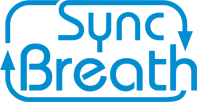Conscious vs Unconscious
My body is a container of a tangled network of nerves transferring activation signals and feedback information from and to my brain. The nerves allow bidirectional communication.
I have two separate nerve channels connecting my brain with my breathing system. The first set of nerves is the Vagus highway. It starts in the primitive reptilian part of my brain, passes through my neck, and wanders all over my body. It branches again and again, functioning as the main nerve bus in my body. It’s like an information highway connecting my brain to my lungs, heart, kidneys, liver, digestive system organs, spleen, tongue, and other body parts. It’s a shared channel. My unconscious ‘breathing app’ sends activation signals to the muscles operating my breathing system and, via the Vagus nerve, gets feedback on how these were processed. According to the feedback, my ‘breathing app’ adjusts the next activation signal.
A second smaller set of nerves, which can operate my lungs, originates in the front of my brain, from the area responsible for my decision-making. It’s a direct dedicated channel that I can command at will, and the communication via these nerves is also bidirectional, allowing feedback.
My two sets of nerves work side by side. When my awareness takes over, the control signals from my ‘breathing app’ are temporarily disabled. For security reasons, my ‘breathing app’ gets a ‘copy’ of all feedback signals. If I consciously attempt to cross some limits, my ‘breathing app’ will try to regain control and prevent me from causing myself damage. When I let go, as my awareness shifts away from my breathing, control is not left to chance. Instead, my ‘breathing app’ immediately kicks in and is again entirely in charge.
The lungs are the only vital organ in my body with dual control, automatic and manual. My breathing system is a crossing point between my conscious and unconscious nerve channels. This unique crossing allows me to use conscious breathing to influence processes otherwise controlled unconsciously. Even though the control of the two nerve channels is separate, they induce and impact one another. I can use this nerve crossing as a back door, allowing indirect control of what seems to be out of control. For example, it’s practically impossible for me to decide by thought whether to increase or decrease my heartbeat. However, I can breathe in a particular manner that will change my heart rate.
Furthermore, I can similarly impact my blood pressure, sweating, bowel movement, and other vital functions. Another incredible feature is that I can indirectly use the feedback signals from the lungs to my brain to impact my thinking mind. Giving my thinking mind a deliberate command to reduce processing thoughts is challenging. Still, I can consciously breathe in a particular manner, which signals my mind to decrease thought intensity. My breathing serves as a bridge connecting the primitive part of my brain to my advanced thinking part.
The electrical activating signals originating mainly in my brain, are transmitted through my body at the speed of light. Besides my electrical nerve system, I also have a chemical signaling system. These are my hormones, which are primarily secreted from my glands and travel relatively slower through my body. These two signaling methods translate into triggers, which activate my muscles, and cause changes in my blood pressure, heartbeat, body temperature, and many more. But most importantly, these may impact my thinking mind.
Balancing opposite forces
Two competing forces influence my unconscious breathing: relaxing and stimulating. These two balance the impact of changing conditions around me and improve my chances of survival. There is an ongoing shift in dominance between them, each pulling in the opposite direction.
Rest – Repair – Reflect
When having a sense of being safe, humans are typically relaxed. That is the default state toward which our body is constantly aiming. When we relax, the body diverts resources for repairing, restoring, healing, growing, and rejuvenating. This state is characterized by a relatively slow heartbeat, slow breathing tempo, and a calm feeling. In this state, the mind tends to drift to reflective thoughts.
I will refer to this state in short as Rest & Repair
Fight – Flight – Freeze
When surrounding conditions change and our well-being is compromised, we switch to a state of alert. The body prepares for optional reactions: fight, if that is perceived as a better choice, or escape from the threat. Both options require a concentrated physical effort. We need to mobilize energy from the inner parts of the body to the outer parts. As a result, the body releases stress hormones, the immune system is depressed, the heart beats faster, abdominal muscles tighten, digestion suspends, and breathing becomes more intensive than usual, improving chances of overcoming a danger.
Some people react to a dangerous situation by freezing or ‘playing dead.’ In this case, breath is often held or reduced drastically, with minimal motion. Animals and humans alike instinctively freeze when their mind interprets this option as having survival advantages.
I will refer to this state in short as Fight or Flight
The continued shift in dominance between the two states, Fight or Flight, and Rest & Repair, allows me to react quickly to changing situations and cope with instabilities.

